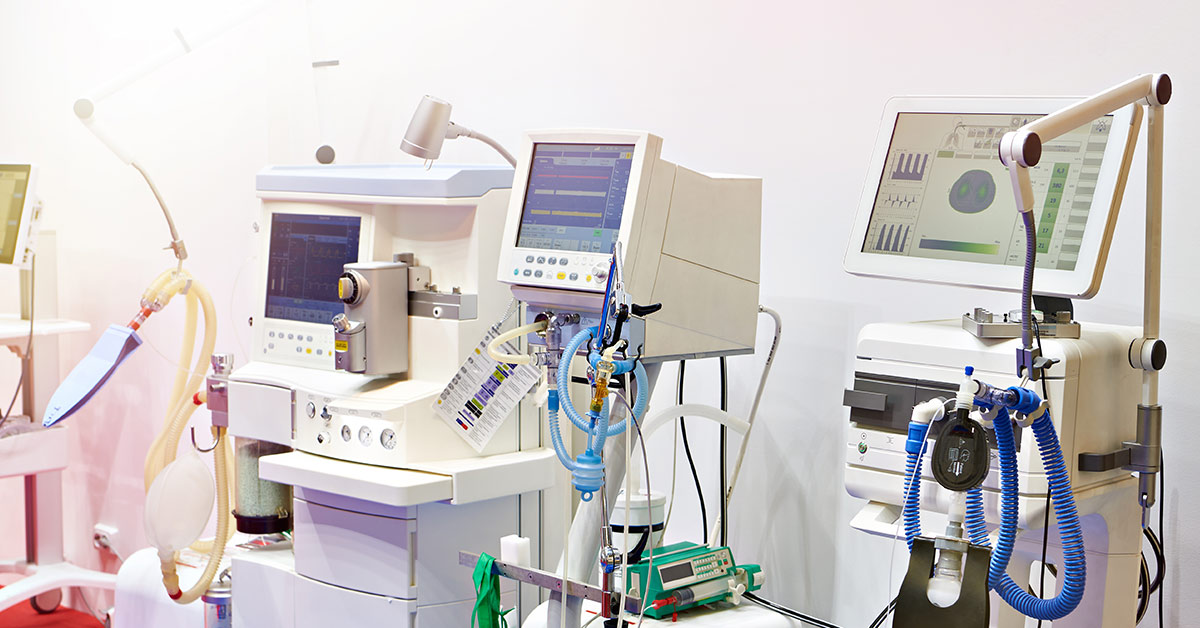The need to be able to breathe in any other manner other than through our lungs is likely not something any of us have really thought about. At the very least, not before the COVID-19 pandemic hit and hospitals had more people in respiratory distress than ventilators to offer them. Scientists are now researching alternative breathing methods should this occur again. Plan B? Possibly ‘breathing through your butt.’ (1)
Anal Breathing In Place Of Regular Ventilators
There are plenty of other animals who have adapted to perform eternal ventilation via the anus (EVA aka butt breathing), and scientists are now wondering: Could humans do the same? Now before you jump to shouting “That’s crazy! I’ll just breathe normally, thanks!” they aren’t trying to change the way we breathe 24/7. What they are considering is how to deliver much-needed oxygen to people who need it when there are no ventilators readily available.
Regular ventilators have been a hot commodity throughout the COVID-19 pandemic. Hospitals ran out of them early on with next to no alternatives for people who couldn’t catch a breath. This is where EVA may come in handy.
What Is EVA?
Patients experiencing respiratory failure need oxygen quickly. Regular ventilators are costly, can be very hard on the body, and in cases of widespread respiratory illness, in short supply. Enteral ventilation is an alternative option where oxygen transfer occurs through the anus and intestines rather than in the lungs. (2)

When we breathe, oxygen transfer occurs in the lungs. In brief, we breathe in oxygen which gets swapped out with carbon dioxide. That oxygen then gets absorbed by microvilli in the lungs and transferred around the body where it is needed – the brain, muscles, and other important organs.
Our intestines have plenty of microvilli that absorb and transfer a number of important nutrients and chemicals into our bloodstream, so why not oxygen, as well? This is exactly what Dr. Takanori Takebe of Tokyo Medical and Dental University in Tokyo (TMDU) has been exploring.
Read: How Harmful Is Black Mold? One Woman’s Symptoms Highlight the Potential Dangers
Two Methods
There are two ways that breathing through our nether regions can occur:
- Inter-rectal oxygen gas ventilation (g-EVA, oxygen as a gas only), or
- Liquid ventilation (l-EVA) with oxygenated perfluorocarbon
Perfluorinated hydrocarbons are alkanes that have replaced their hydrogens with fluorine. They are not chemically reactive and therefore don’t break down in your body or in the environment. Moreover, they can absorb an incredible amount of oxygen.
“The rectum has a mesh of fine blood vessels just beneath the surface of its lining, which means that drugs administered through the anus are readily absorbed into the bloodstream,” said first author Ryo Okabe. “This made us wonder whether oxygen could also be delivered into the bloodstream in the same way. We used experimental models of respiratory failure in mice, pigs and rats to try out two methods: delivering oxygen into the rectum in gas form and infusing an oxygen-rich liquid via the same route.” (3)
Read: Scientist: Cannabis-Based Antibiotics Could Be Available Within Five Years
Enteral ventilation: The Research
TMDU researchers did several experiments with EVA on mice, rats, and pigs, and all were successful. Mice deprived of breathable oxygen survived five times longer when given EVA than the control groups when given oxygen as a gas (option one). There were some complications, however, as the mucus membrane in the intestines had to be “scrubbed” to prevent it from acting as an oxygen barrier.
In a second experiment, the researchers used the perfluorocarbon method. Not only did the animals’ intestines not need any scrubbing, but they survived significantly longer than with just the straight-up gas. On top of that, the animals showed no signs of any adverse effects. This is great news for anyone who has ever gone through mechanical ventilation – a brutal experience, to say the least.
“Patients in respiratory distress can have their oxygen supply supported by this method to reduce the negative effects of oxygen deprivation while the underlying condition is being treated,” said co-author Prof Takanori Takebe. “Enteral ventilation showed great promise in our asphyxia-like experimental model. The next steps will be to test safety of the EVA approach with more profound mechanistic understanding by which it works; and to establish effectiveness in humans in a clinical setting.”
More Resreach Needed
The scientists say they need to do more research. This especially includes human trials to know if this will be as effective in people as in animals. If successful, this could make a huge difference in the lives of anyone who needs help breathing. Most definitely it will be a game-changer for hospitals and patients in the case of future widespread respiratory illness.
Keep Reading: ‘WE ALL QUIT’: How America’s Workers Are Taking Back Their Power
Sources
- “Mammalian enteral ventilation ameliorates respiratory failure.” Cell. Ryo Okabe, et al. June 11, 2021.
- “Enteral ventilation via anus: You can hold your breath.” Science Direct. Caleb J.Kelly. June 11, 2021.
- “You may be able to breathe out of your bum, and one day it could save your life.” Science Focus. Jason Goodyer May 20, 2021.

